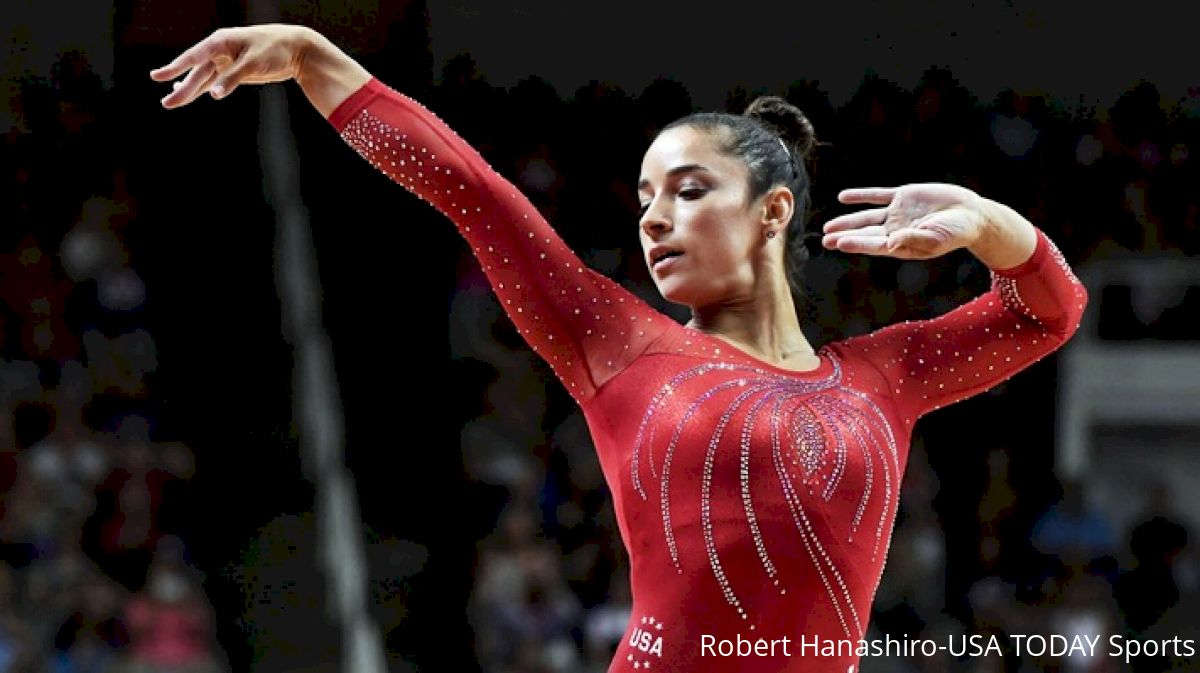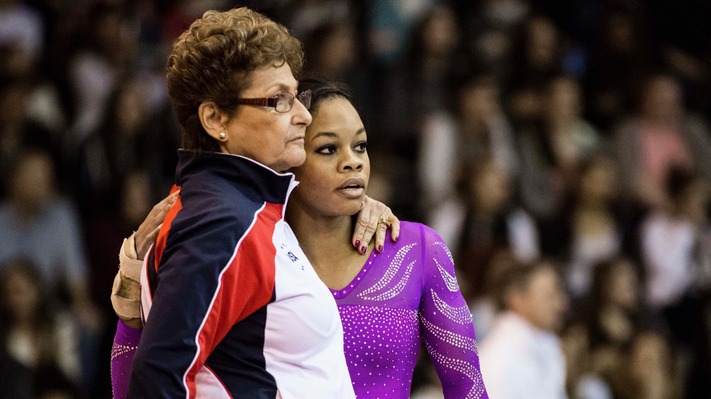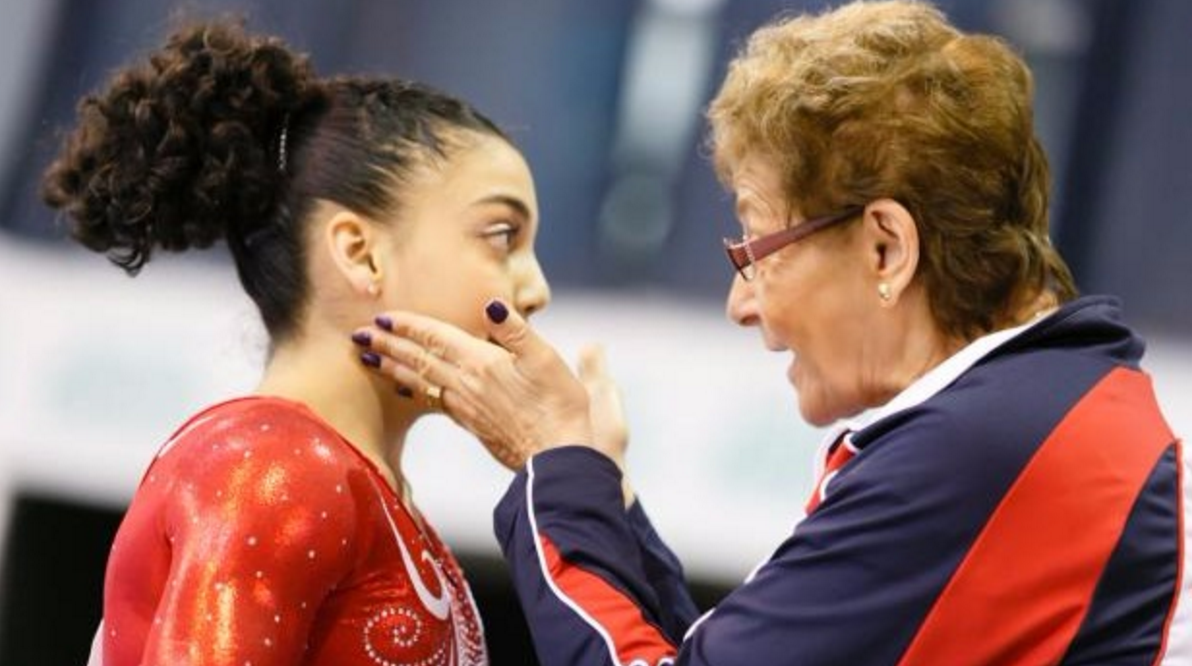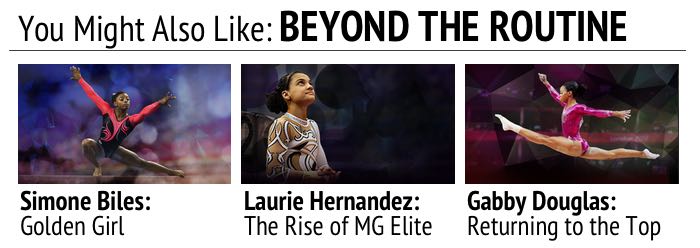Rio 2016 Lineup Questions and the All-Around Qualification Conundrum
Rio 2016 Lineup Questions and the All-Around Qualification Conundrum
Now that the five-member U.S. Olympic team has been named, many have begun speculating about what lineups will look like, both in the qualification round an

Now that the five-member U.S. Olympic team has been named, many have begun speculating about what lineups will look like, both in the qualification round and team finals in Rio. Some lineups seem more obvious than others, but with so much talent on one team, there are bound to be some surprises, as well.
For example, every Team USA athlete is an all-around gymnast, but four are arguably some of the top all-around gymnasts in the world: Simone Biles, Gabby Douglas, Aly Raisman and Laurie Hernandez. The two-per-country rule means only two will qualify to the final round, which begs the question: who will attempt to qualify?

The answer lies entirely in who Martha Karolyi will put up on uneven bars in qualifications. The qualifications format is four gymnasts compete per apparatus, and three scores count toward the team score. On uneven bars, Madison Kocian will compete in qualifications--not just for the team score, but to qualify for the event finals. Kocian is currently the world champion on uneven bars and has a shot at a medal in Rio. That leaves three spots left, with four potential all-around gymnasts.
While Kocian seems like a lock for one of the four spots on bars, Biles is also probably a lock because of her potential in the all-around. It would be shocking if the three-time world champion was not given the chance to qualify for the all-around finals, where many think she'll take the gold medal. That leaves two spots left between Raisman, Douglas and Hernandez.

When considering those last two spots, remember Karolyi will want to maximize the team score on the event. On one hand, the U.S. team seems so far ahead of the competition that they should have no problem qualifying for finals regardless of who competes on bars. In fact, they would likely still qualify in first place, as long as there were no major errors. But it would be surprising if Douglas was not put up on bars, her best event, during the qualification round. Her score would not only help the team, but might even qualify her to event finals, along with Kocian. For some perspective on how she performs internationally, Douglas qualified to the bars final at the World Championships last year, and placed fifth behind the four-way gold medal tie with a 15.133 and a 6.4 D-score. She did even better in the team final by scoring a 15.233.
If we assume Douglas will be put up on bars in qualifications, then the last spot is between Raisman and Hernandez--that's where it gets tricky. Both gymnasts are excellent all-around competitors, and have placed second or third behind Biles in the last few competitions. At the conclusion of Trials, they were separated by 1.4 points, with Hernandez ahead of Raisman. At the conclusion of P&Gs, they were separated by 0.6 points, with Raisman ahead of Hernandez. Either gymnast could win a medal if allowed to compete in all-around finals.

Who would you give the opportunity to? If you go by the next best gymnast on bars, then Hernandez beats Raisman. In fact, she's one of Team USA's best bar workers with a 6.4 D-score and excellent execution. Raisman has a 5.9 D-score and tends to score in 8.2-8.4 range for execution. At Trials, she ranked 11th on bars over two days.
The difficulty is that even with a low-scoring bar routine, Raisman is one of the best all-grounders. She made it clear that one of her reasons for returning to the Olympics was to compete in the all-around final again after a disappointing tie-breaker put her in fourth in 2012. In addition, she and Hernandez have been scoring similarly in the all-around all year, which makes it difficult to distinguish one gymnast over the other in terms of who is more capable.
Can history provide us with any hints? In 2012, the team had McKayla Maroney as a specialist and four all-around competitors: Douglas, Raisman, Jordyn Wieber and Kyla Ross. For qualifications on vault, the event the U.S. used their specialist on, Ross was not activated. Her vault was the lowest-scoring out of the five, which is similar to Raisman this year on bars. Ross was used on every other event in qualification, and on floor due to Maroney's injury. In terms of all-around scoring capability, Ross tended to place below Raisman, but not that far behind. At Nationals in 2012, Ross had the same score (60.2) on day two as Raisman on day one. At the Trials, Ross scored a 60.6 on day two, which was higher than Raisman's day one score and just 0.05 behind her day two score.

Jerry Lai-USA TODAY Sports
The first takeaway is Karolyi will likely use whoever is better at the event for the qualification round--in this case, Hernandez. The second is Karolyi would want the more experienced gymnast to have the chance to qualify to all-around finals. Ross was a first-year senior, as Hernandez is, which would imply Raisman would compete instead. Another way to look at it is Ross was named to the team while thinking she would be used on bars and beam only; it was never under consideration that she would compete all-around, in which case it's hard to use 2012 as a comparison study.
While having too many top all-arounders sounds like a nice problem to have, it will be a difficult decision for Karolyi to make when the time comes. Now, we want to hear what you think!
[polldaddy poll="9476032"]

Related:
Inside Look at USA's 2016 Olympic Team
Top Execution Scores from 2016 U.S. Olympic Trials
2012 vs. 2016: Olympic Team Comparison
2016 U.S. Women's Olympic Gymnastics Team Named
For example, every Team USA athlete is an all-around gymnast, but four are arguably some of the top all-around gymnasts in the world: Simone Biles, Gabby Douglas, Aly Raisman and Laurie Hernandez. The two-per-country rule means only two will qualify to the final round, which begs the question: who will attempt to qualify?
Uneven Bars is the Key

The answer lies entirely in who Martha Karolyi will put up on uneven bars in qualifications. The qualifications format is four gymnasts compete per apparatus, and three scores count toward the team score. On uneven bars, Madison Kocian will compete in qualifications--not just for the team score, but to qualify for the event finals. Kocian is currently the world champion on uneven bars and has a shot at a medal in Rio. That leaves three spots left, with four potential all-around gymnasts.
While Kocian seems like a lock for one of the four spots on bars, Biles is also probably a lock because of her potential in the all-around. It would be shocking if the three-time world champion was not given the chance to qualify for the all-around finals, where many think she'll take the gold medal. That leaves two spots left between Raisman, Douglas and Hernandez.

When considering those last two spots, remember Karolyi will want to maximize the team score on the event. On one hand, the U.S. team seems so far ahead of the competition that they should have no problem qualifying for finals regardless of who competes on bars. In fact, they would likely still qualify in first place, as long as there were no major errors. But it would be surprising if Douglas was not put up on bars, her best event, during the qualification round. Her score would not only help the team, but might even qualify her to event finals, along with Kocian. For some perspective on how she performs internationally, Douglas qualified to the bars final at the World Championships last year, and placed fifth behind the four-way gold medal tie with a 15.133 and a 6.4 D-score. She did even better in the team final by scoring a 15.233.
If we assume Douglas will be put up on bars in qualifications, then the last spot is between Raisman and Hernandez--that's where it gets tricky. Both gymnasts are excellent all-around competitors, and have placed second or third behind Biles in the last few competitions. At the conclusion of Trials, they were separated by 1.4 points, with Hernandez ahead of Raisman. At the conclusion of P&Gs, they were separated by 0.6 points, with Raisman ahead of Hernandez. Either gymnast could win a medal if allowed to compete in all-around finals.
Hernandez vs. Raisman?

Who would you give the opportunity to? If you go by the next best gymnast on bars, then Hernandez beats Raisman. In fact, she's one of Team USA's best bar workers with a 6.4 D-score and excellent execution. Raisman has a 5.9 D-score and tends to score in 8.2-8.4 range for execution. At Trials, she ranked 11th on bars over two days.
The difficulty is that even with a low-scoring bar routine, Raisman is one of the best all-grounders. She made it clear that one of her reasons for returning to the Olympics was to compete in the all-around final again after a disappointing tie-breaker put her in fourth in 2012. In addition, she and Hernandez have been scoring similarly in the all-around all year, which makes it difficult to distinguish one gymnast over the other in terms of who is more capable.
What History Tell Us
Can history provide us with any hints? In 2012, the team had McKayla Maroney as a specialist and four all-around competitors: Douglas, Raisman, Jordyn Wieber and Kyla Ross. For qualifications on vault, the event the U.S. used their specialist on, Ross was not activated. Her vault was the lowest-scoring out of the five, which is similar to Raisman this year on bars. Ross was used on every other event in qualification, and on floor due to Maroney's injury. In terms of all-around scoring capability, Ross tended to place below Raisman, but not that far behind. At Nationals in 2012, Ross had the same score (60.2) on day two as Raisman on day one. At the Trials, Ross scored a 60.6 on day two, which was higher than Raisman's day one score and just 0.05 behind her day two score.

Jerry Lai-USA TODAY Sports
The first takeaway is Karolyi will likely use whoever is better at the event for the qualification round--in this case, Hernandez. The second is Karolyi would want the more experienced gymnast to have the chance to qualify to all-around finals. Ross was a first-year senior, as Hernandez is, which would imply Raisman would compete instead. Another way to look at it is Ross was named to the team while thinking she would be used on bars and beam only; it was never under consideration that she would compete all-around, in which case it's hard to use 2012 as a comparison study.
While having too many top all-arounders sounds like a nice problem to have, it will be a difficult decision for Karolyi to make when the time comes. Now, we want to hear what you think!
POLL
[polldaddy poll="9476032"]

Related:
Inside Look at USA's 2016 Olympic Team
Top Execution Scores from 2016 U.S. Olympic Trials
2012 vs. 2016: Olympic Team Comparison
2016 U.S. Women's Olympic Gymnastics Team Named